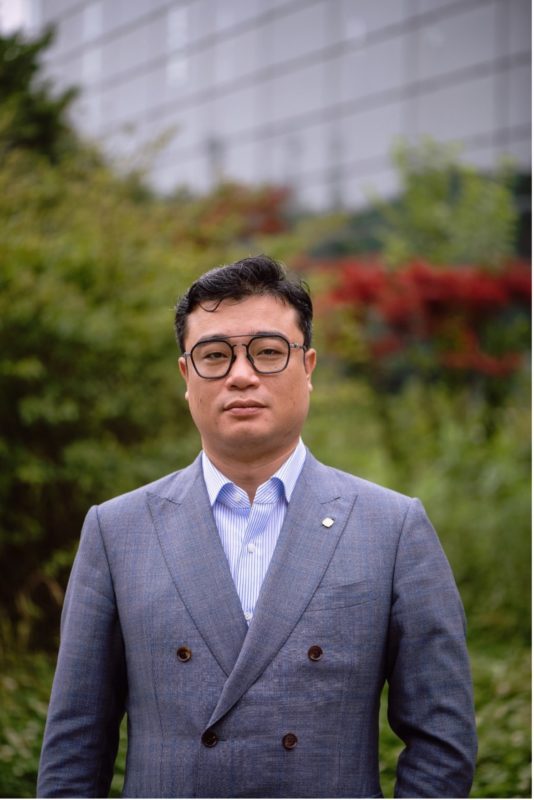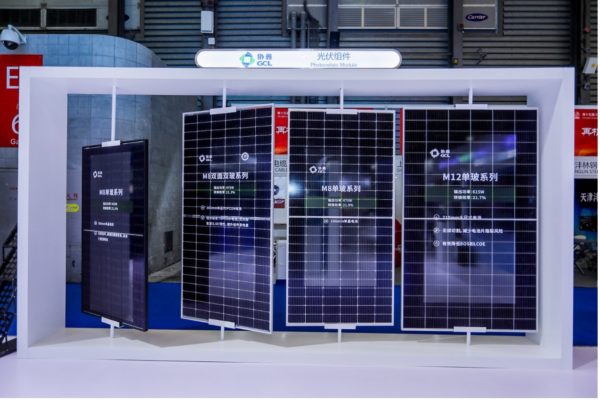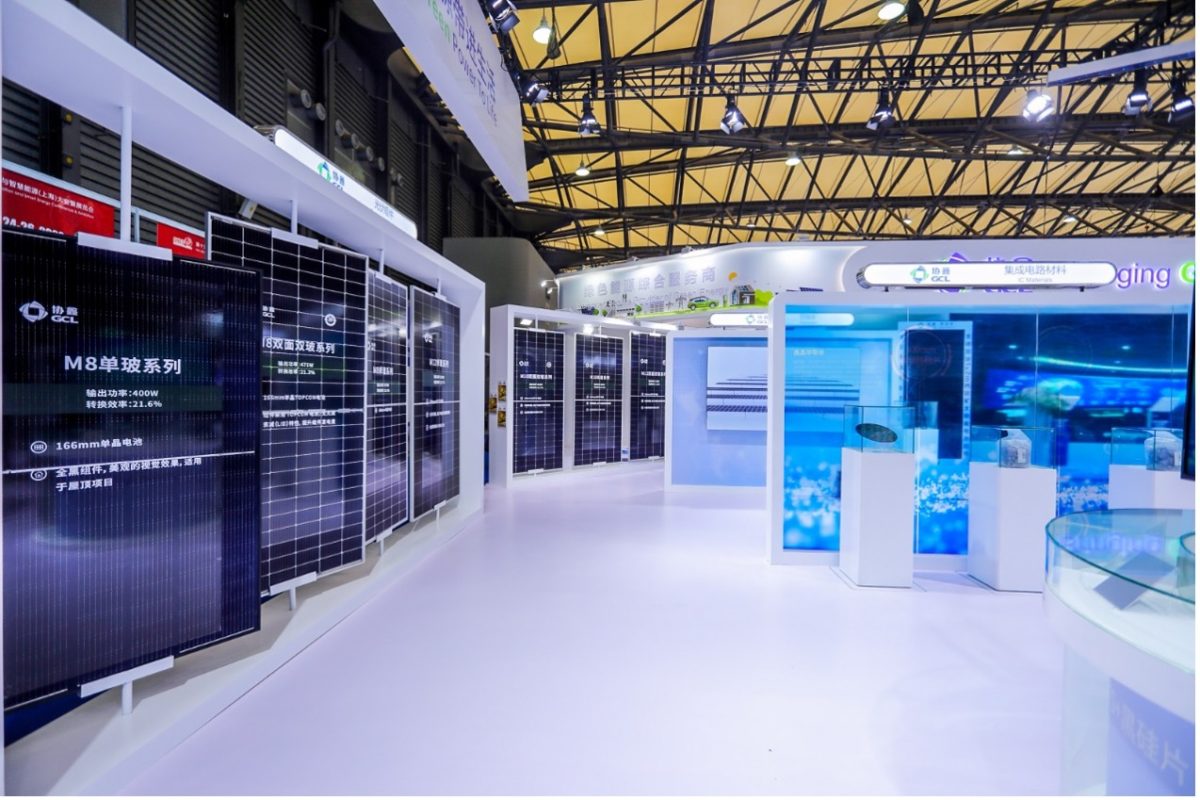pv magazine: Over the past two years, GCL has sold several PV plants to China state owned energy enterprises. However, these assets appear to be more valuable now. How does GCL see this kind of deal, and will you change your future strategy?
 Thomas Kun Zhang, general manager, GCL System Integration: For better financial status and in the interest of the entire group, GCL had to change its heavy asset business model to a much lighter one. We started selling off PV plants in 2018 and, with more than 6 GW of solar PV farms sold by end of this June, we have significantly lowered the liabilities and debts of the entire GCL group, including GCL System Integration. Thus, we now have a much better financial position for future development.
Thomas Kun Zhang, general manager, GCL System Integration: For better financial status and in the interest of the entire group, GCL had to change its heavy asset business model to a much lighter one. We started selling off PV plants in 2018 and, with more than 6 GW of solar PV farms sold by end of this June, we have significantly lowered the liabilities and debts of the entire GCL group, including GCL System Integration. Thus, we now have a much better financial position for future development.
In the future, GCL will focus on hydrogen energy development and engineering, procurement, and construction (EPC) projects. We will not be an Independent Power Producer (IPP) anymore. This field might be more suitable for state owned enterprises.
What are GCL’s plans when it comes to PV module manufacturing?
In 2020, GCL announced a new PV module base in east Hefei City, Anhui Province, with a total planned module capacity of 60 GW. Last December, construction started on Phase I of this project with a capacity of 15 GW. Currently, we’re on track to finish construction and commission the first 5 GW by the end of Q3; another 5 GW of capacity will be completed in mid-2022. For the supporting solar cell operations, GCL has planned a 10 GW capacity investment in Leshan City, Sichuan Province, with advanced Passivated emitter rear cell (PERC), TOPCon (tunnel oxide passivated contact) and heterojunction (HJT) technologies.
Many Chinese PV companies are planning to vertically integrate their operations to secure their supply chains. Is this a consideration for GCL?
GCL is perhaps the only Chinese PV company that has successfully achieved vertical integration, covering all aspects of downstream and upstream. As mentioned, we have planned for a total of 60 GW of new PV module capacity in Hefei, Anhui; and in Leshan, Sichuan Province, 10 GW of advanced solar cell capacity. Meanwhile, our sister company, the Hong Kong listed GCL-Poly, has invested in advanced Fluidized Bed Reactor (FBR) methods for polysilicon production. The Xuzhou base has already started mass production of 10,000 ton/year of granular silicon at the beginning of this year. And in Leshan city, Sichuan province, the first phase of our granular silicon project, with a designed capacity of 100,000 ton/year, is expected to start operation in mid-2022. In Inner Mongolia, another granular silicon project with 300,000 ton/year capacity is also advancing quickly.
What new PV modules has GCL brought to this year’s SNEC?
We presented lots of PV module products featuring advanced module technologies at this year’s show, including large sized wafers, half cut solar cells, and multi bus bar (MBB), bifacial and perovskite techs. There is one product I want to emphasize, which is our new concept module equipped with a heat pump to absorb heat from the panel’s surface. The heat pump can reduce the surface temperature and improve power generation; meanwhile, absorbed heat can raise water temperature for hot water consumption. Our calculation shows that a 5% power generation increase is possible.
Since mid-2020, a series of cost rises in the industry has caused troubles for many PV module makers and solar project developers. How has GCL been impacted?
The downstream installation market has suffered a lot from the rises, not only from component costs, including polysilicon, PV glass, aluminum frames and others, but also logistic and labor costs for installation. We understand that the polysilicon cost rises came about from short supply; however, we don’t understand why the wafer costs kept rising at the same rate. The wafer makers should have made concessions for the exchange of development of PV installations.

Will PV installation targets also suffer this year?
I think the overseas PV installation market will be affected more than China’s domestic market. With high upstream costs, very high shipping costs – container quotes increased from USD$2,700 in the last year to over $14,000 – and poor Covid-19 controls in many markets like India, I am not optimistic about the overseas market this year. More importantly, many overseas markets will lose signed power purchase agreements (PPA) due to time delays or profitability concerns, which will not happen in China.
For the next generation of solar cells, both TOPCon and HJT technologies have their benefits. How does GCL see them?
Our current strategy is to utilize TOPCon on our production lines and provide our customers with the latest PV module products comprising advanced solar cell technology. We are also developing pilot lines for HJT and are keeping on top of all new technical developments and cost changes, including equipment and N-type silicon costs. Besides TOPCon and HJT, GCL has also made great efforts in the R&D of perovskite cells and FBR silicon. With the help of perovskite cells and lower cost FBR silicon, I think PV module costs will be reduced to lower than RMB1.2 per watt in three to five years, which will make solar PV the most competitive of all energies.
Solar PV is becoming more popular around the world. How does GCL balance overseas and domestic markets?
If you look at our financial reports, you will see that the overseas business of GCL System Integration has comprised around 70% of our revenue over the past few years. From this figure, we see a quite successful internationalization of the company. But this year, due to the ongoing pandemic, I think the domestic market will increase. But this won’t stop GCL’s pace of globalization. We have established branches in major countries on six continents and more offices will be set up along with the development of our business.
There are an increasing number of players focusing on building integrated PV (BIPV). What’s your opinion of this market?
We have seen that some important PV players like Longi have entered this market and we believe it will be huge. But at present there are not many good BIPV products to fulfill the market's needs. I believe the industry needs to develop and launch more BIPV products to better match the scenarios, including not only roof, but also building walls. More importantly, I think is essential to improve the power system of a building – not only power generation, but also power storage and power management. This might require more thinking and exploring.
What do you think about the competition between 182mm and 210mm PV modules?
For some scenarios, like the residential rooftop market, PV modules are limited in size, weight, and labor cost. For utility scale PV plants, if taking into consideration the major inverter manufacturers like Huawei – its 1500 V product is becoming popular – then bigger modules can become more competitive. In this respect, the 210mm product has the advantage of lower costs. As such, it will beat 182mm module types. At GCL, our new lines are all compatible with 182mm and 210mm modules, so we don’t care much about the debate and just provide our customer the product they want.
This content is protected by copyright and may not be reused. If you want to cooperate with us and would like to reuse some of our content, please contact: editors@pv-magazine.com.



3 comments
By submitting this form you agree to pv magazine using your data for the purposes of publishing your comment.
Your personal data will only be disclosed or otherwise transmitted to third parties for the purposes of spam filtering or if this is necessary for technical maintenance of the website. Any other transfer to third parties will not take place unless this is justified on the basis of applicable data protection regulations or if pv magazine is legally obliged to do so.
You may revoke this consent at any time with effect for the future, in which case your personal data will be deleted immediately. Otherwise, your data will be deleted if pv magazine has processed your request or the purpose of data storage is fulfilled.
Further information on data privacy can be found in our Data Protection Policy.